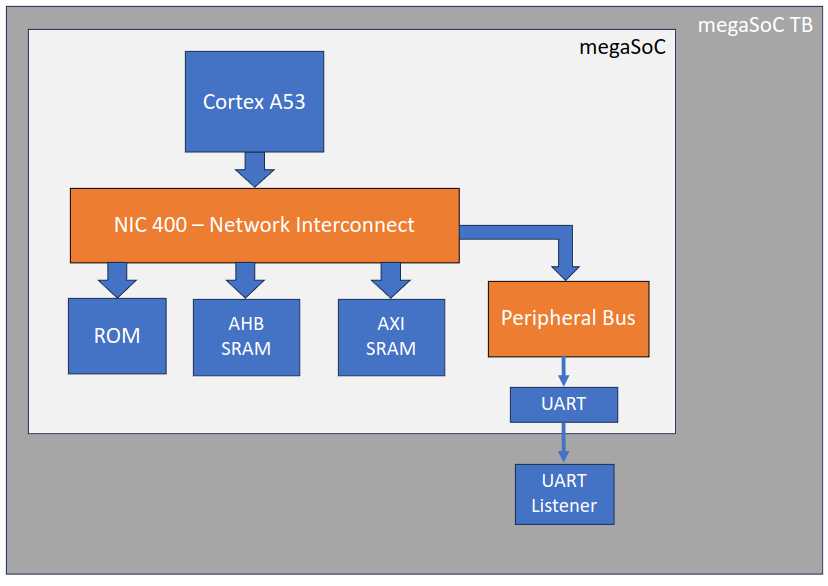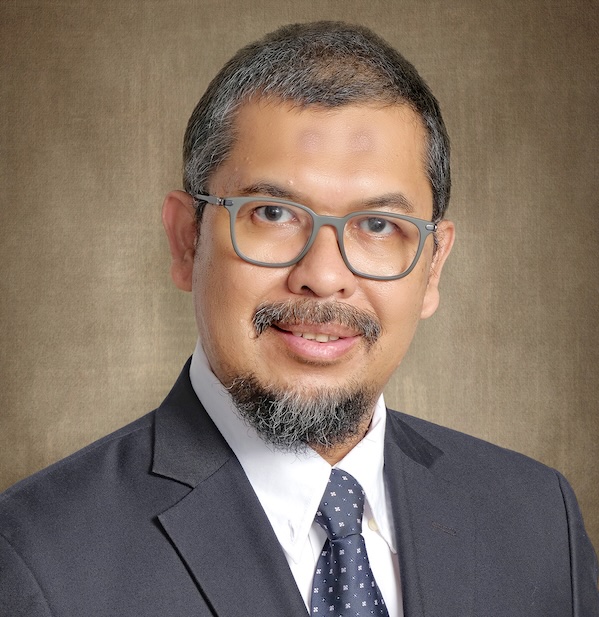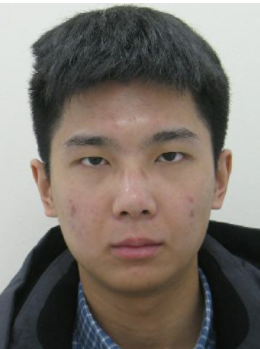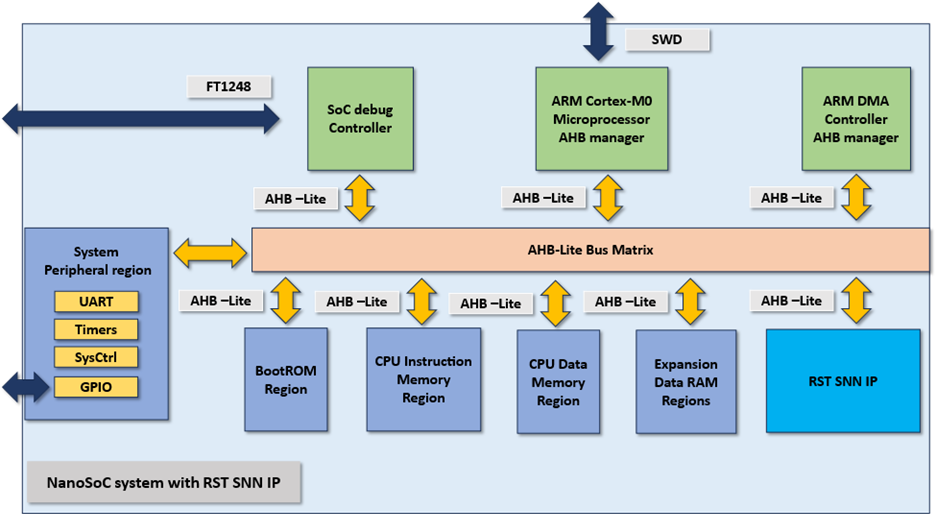Use the Tabs below to find information on community projects. Project pages have links to the 'technology' and 'design flow' stages used and ways you can comment on or join a project.
- Projects are key to community hardware design
-
As a community hardware design activity we form our collaborations around shared design actions making Projects a core of the SoC Labs community. Projects help us share and reuse hardware and software developments around core Arm IP to help us in our research goals.
- A project, takes technology and uses a design flow to make a SoC.
-
A project has a timeframe and uses the two other significant aspects of a SoC development, the selection of technology or IP blocks that make up the SoC and the design flow that is followed from specification through to final instantiation of a system. Any System On Chip usually involves the use of pre-existing IP blocks. A project team can select IP from the technology section of the site during the first stage of a design flow, Architectural Design. Later stages in the design flow support the creation of the novel aspects of the SoC design.
- Projects have a type, either active, complete (case study) or being formulated (request for collaboration)
-
Sharing information on projects much earlier than traditional academic collaboration is encouraged. Historically knowledge sharing has been at the end of the research activity, with published papers and results. As well as write up of finished projects ("case study"), ongoing projects under development ("projects") there are projects that are still being formulated ("request for collaboration") listed. We want to encourage people to engage with the project teams, for example, adding a comment to a specific project page or joining a project.
Latest Reference Design Projects

The PCK600 Arm IP provides components to allow a power control infrastructure to be distributed in a SoC in order to make a design energy efficient. Arm provide the IP as part of their Power Control System Architecture that can be used to control the power states of various parts of the system. This control of the power infrastructure is achieved through the use of the Power Policy Unit (PPU). This unit has an APB interface to allow for software control, and some low power interfaces that can connect to the power controllable IP within the system.

megasoc has been designed to provide a complex SoC component that can 'host' and support the development and evaluation of research components or subsystems. The design allows for seamless transition from FPGA to physical silicon implementation via a pre-verified programmable control system that allows reuse of software and diagnostic functionality to facilitate the configuration, control and diagnostic analysis of research hardware such as custom accelerators or signal processing.


The Arm Cortex-M55 AIoT SoC design platform is an AIoT subsystem that allows custom SoC designers to integrate their hardware circuits and embedded software for differentiation. The platform is developed by TSRI (Taiwan Semiconductor Research Institute) to support academic research on SoC design. It's built on the Arm Corstone-300 reference package, featuring the Cortex-M55 CPU and Ethos-U55 NPU.
Latest Collaborative Projects

This program is dedicated to the development of a System on Chip (SoC) platform, specifically designed to support learning and research activities within Indonesian academic institutions. The platform serves as an educational and research tool for students, lecturers, and researchers to gain hands-on experience in digital chip design.

The instruction memory in the first tape out of nanosoc was implemented using SRAM. The benefit was the read bandwidth from this memory was very fast, the downside was on a power-on-reset, all the code was erased as SRAM is volatile memory. An alternative use of non-volatile memory would benefit applications where deployment of the ASIC does not allow, or simply time is not available for programming the SRAM after every power up.

There is growing interest within the SoC Labs community for an Arm A-Class SoC that can support a full operating system, undertake more complex compute tasks and enable more complicated software directed research. The Cortex-A53 is Arm's most widely deployed 64-bit Armv8-A processor and can provide these capabilities with power efficiency.
This project aims to design and implement a high capacity memory subsystem for Arm A series processor based SoC designs. The current focus of the project is the design and implementation of a Memory Controller for DDR4 memory.
Latest Competition Projects

Reconfigurable Intelligent Surfaces (RIS) are planar structures composed of large arrays of tunable elements that can dynamically redirect, reflect, or shape wireless signals in the environment.
This project aims to develop an advanced RF energy harvesting (EH) receiver chip specifically designed to power embedded sensors for monitoring the condition of groceries during transportation. The receiver chip captures wireless energy transmitted from phased array antennas and converts it into electrical power that is used to operate onboard sensors, which continuously monitor critical parameters such as temperature and humidity inside delivery trucks.

Stroke and epilepsy are among the most common debilitating neurological conditions, with a worldwide prevalence of 100 million people (World Stroke Organization, 2022) and 50 million people (World Health Organization, 2024), respectively. Present-day approaches for treating neurological and neurosurgical conditions include physiotherapy, pharmacological treatment, surgical excision, and interventions such as deep brain stimulation.
In the context of Industry 4.0, handwritten digit recognition plays a vital role in numerous applications such as smart banking systems and postal code detection. One of the most effective approaches to tackle this problem is through the use of machine learning and neural network models, which have demonstrated impressive accuracy and adaptability in visual pattern recognition tasks.
Latest Completed Project Milestones
| Project | Name | Target Date | Completed Date | Description |
|---|---|---|---|---|
| Sensing for Precision Agriculture | Gain Familiarity with Cadence Workflow |
Using full Cadence Design Tools workflow for synthesis, implementation, etc. to build up team knowledge of associated processes, in preparation for using this workflow on our RTL..
|
||
| Neural Activity Processor | Milestone #2 |
The input to the neural processor is received via a Serial Peripheral Interface (SPI) from an external device connected to neurons in the mouse brain. To enable digital recording and convert the incoming serial data into parallel format, a sampler block is implemented. The sampler is activated by an The sampler is implemented as a custom RTL module composed of nested finite state machines (FSMs) that coordinate the SPI communication with the amplifiers according to their operating frequency. It remains active and continuously outputs data for the duration that the |
||
| An Efficient Hardware-based Spike Train Repetition for Energy-constrained Spiking Neural Networks | Milestone #6: RST SNN IP architecture with AHB slave interface |
This milestone describes the finalized architecture of the RST SNN IP, a specialized hardware accelerator that executes inference using Spiking Neural Networks and the Repetitive Spike Train (RST) method. The IP is designed for integration into the NanoSoC platform via an AHB-Lite slave interface. Architecture Components (as shown in the diagram)
|
||
| An Efficient Hardware-based Spike Train Repetition for Energy-constrained Spiking Neural Networks | Milestone #1: Determine scope and focus |
Project management This project will follow a standard SoC development workflow, serving as a foundational element for the NanoSoC reference platform. Although it may not proceed to full tape-out or silicon validation, the project will have milestones to ensure steady progress. Each milestone will be tracked with corresponding completion dates and documentation. To maintain agility and responsiveness, flexible intermediate goals will be established. These will help break down the overall objective—designing an energy-efficient RST-based SNN IP for handwritten digit recognition—into manageable phases, from algorithm modeling to RTL implementation and system integration. Design methods The project will adopt a top-down design methodology:
Access to IP Access to standard IP blocks (Cortex M0+ core, AHB interfaces, memory, DMA) will be provided through the nanoSoC platform, while the RST SNN IP will be developed in-house. Git to nanoSoC repository: SoCLabs / NanoSoC Tech · GitLab Git to RST SNN IP repository: |
||
| An Efficient Hardware-based Spike Train Repetition for Energy-constrained Spiking Neural Networks | Milestone #4: Design SoC architecture |
This milestone focuses on defining the overall architecture of the NanoSoC system, integrating both general-purpose components and the custom RST SNN IP accelerator. The SoC architecture is centered around a lightweight Arm Cortex-M0 processor, with system-level connectivity managed via the AMBA AHB-Lite bus. Key components and architectural decisions include:
This modular SoC architecture is designed with flexibility and scalability in mind, enabling easy expansion or substitution of components. It also ensures low-power operation suitable for edge AI applications focused on handwritten digit recognition. |
||
| An Efficient Hardware-based Spike Train Repetition for Energy-constrained Spiking Neural Networks | Milestone #2: Determine the dataset and SNN model |
In this milestone, the dataset and initial SNN architecture for handwritten digit recognition are defined. The MNIST dataset is selected due to its wide use as a benchmark for image classification tasks and its suitability for validating lightweight neural architectures on resource-constrained platforms. The chosen SNN model consists of four layers:
The structure is designed to balance classification performance and hardware efficiency, laying the groundwork for implementing the RST optimization in future milestones. |
||
| An Efficient Hardware-based Spike Train Repetition for Energy-constrained Spiking Neural Networks | Milestone #5: MATLAB simulation |
In this milestone, we perform a behavioral simulation of the SNN model using MATLAB to evaluate the impact of the Repetitive Spike Train (RST) method on classification accuracy. We applied the RST technique to different hidden layers across a range of Repetitive Time Steps (RTSs) from 1 to 10. The accuracy results is described in Fig. 1. Key observations from the MATLAB simulation include:
Fig. 1. Accuracy results (a) RST implementation at the first hidden layer, (b) RST implementation at the second layer, (c) RST implementation at both hidden layers. These results validate the core assumption behind RST: temporal redundancy in spike trains, especially in early network layers, can be leveraged to improve energy efficiency without compromising classification performance. The MATLAB simulation serves as a critical foundation for the subsequent hardware modeling phase. |
||
| An Efficient Hardware-based Spike Train Repetition for Energy-constrained Spiking Neural Networks | Milestone #3: Determine the requirement IPs |
In this milestone, the IPs required to build the nanoSoC platform are identified. These IPs provide the computational core, memory hierarchy, communication interfaces, and system peripherals needed to support the integration and operation of the RST SNN IP. The SoC will include the following IPs:
System Peripherals:
This set of IPs is selected to ensure compatibility, scalability, and low power operation while meeting the functional requirements of handwritten digit recognition using SNNs |
||
| RF-Powered Sensor Platform for Intelligent Groceries Transportation Monitoring | Post Silicon |
Designed and fabricated the test PCB to test the chip. |
||
| PCK600 Integration in megaSoC | IP Selection |
Chose IP relevant for this design |

 Daniel Newbrook
Daniel Newbrook
 David Flynn
David Flynn
 Trio Adiono
Trio Adiono

 Srimanth Tenneti
Srimanth Tenneti
 Zhicheng Shen
Zhicheng Shen
 Fidel Makatia
Fidel Makatia

 The Anh Nguyen
The Anh Nguyen


